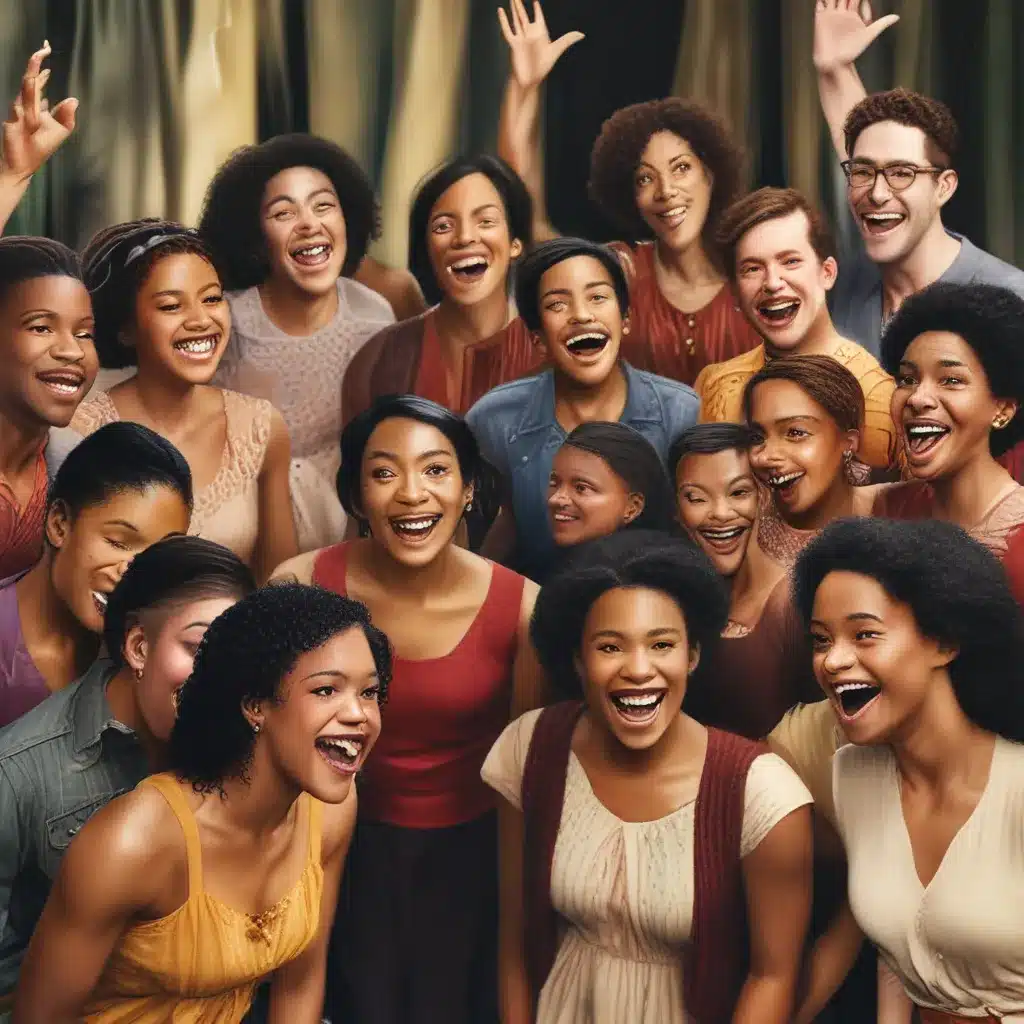
Embracing the Diversity of Musical Theater: Celebrating Inclusive Representation
Unraveling the Tapestry of Inclusive Storytelling
As an agent at the Musical Theater Center, I’ve had a front-row seat to the evolution of our beloved industry. And let me tell you, the changes we’ve witnessed in recent years have been nothing short of exhilarating.
Gone are the days of homogenized casts and cookie-cutter characters. Today, the stage is a vibrant tapestry, woven with the threads of diverse narratives, perspectives, and lived experiences. It’s a glorious sight to behold, my friends.
But you know, the path to this inclusivity hasn’t always been smooth sailing. There have been battles fought, barriers broken, and naysayers silenced along the way. And, if I’m being honest, we still have plenty of work to do.
Reclaiming the Narrative: Celebrating Black Excellence on Broadway
One of the most glaring gaps in the historical record of musical theater has been the erasure of Black excellence. It’s a travesty, really, when you consider the indelible mark that Black artists, writers, and visionaries have left on this art form.
Take the 1970s, for instance – a time that’s often dismissed as a “wasteland” for Broadway. But if you peel back the layers, you’ll uncover a rich, vibrant, and unapologetically Black renaissance. Musicals like “The Wiz,” “Raisin,” and “Purlie” were not only commercial successes, but also groundbreaking in their celebration of Black culture and identity.
Yet, time and time again, these pivotal moments have been glossed over, relegated to the margins, or worse, outright ignored. As Austin Channing Brown so eloquently puts it, “Broadway’s cake is still vanilla, albeit with more sprinkles of color than in the past, but it’s still very much vanilla.”
Well, my friends, it’s time to change that narrative. It’s time to shine a spotlight on the trailblazers, the visionaries, and the game-changers who have been there all along, quietly shaping the landscape of musical theater.
Amplifying Diverse Voices: The Power of Representation
You know, I often think about that iconic moment when young Parker Curry gazed up at the portrait of Michelle Obama, her eyes shining with awe and recognition. It’s a testament to the transformative power of representation – the ability for a child to see themselves reflected in positions of power and influence.
The same holds true for the world of musical theater. When audiences are exposed to a diverse array of stories, characters, and creative voices, it sparks something powerful within them. Suddenly, they’re not just passive observers, but active participants in a cultural dialogue that speaks to their own lived experiences.
Take, for instance, the groundbreaking success of “Hamilton.” Lin-Manuel Miranda’s reimagining of American history, with its vibrant, multicultural cast, didn’t just entertain audiences – it challenged them to rethink the very foundations of our national narrative. It was a revolutionary act, one that continues to reverberate through the industry.
And the momentum hasn’t slowed down. From the soulful storytelling of “Six” to the boundary-pushing spectacle of “Kimberly Akimbo,” the musical theater landscape is brimming with fresh, inclusive voices that are shattering the mold and redefining what it means to be a “Broadway show.”
Dismantling Systemic Barriers: The Ongoing Fight for Equity
But, of course, the journey towards true inclusivity hasn’t been without its setbacks. The sad truth is that the theater industry, like so many other spheres of our society, has been steeped in systemic racism and inequity for far too long.
As the research shows, the stories and contributions of Black artists and creatives have long been marginalized, dismissed, or outright erased from the historical record. And the impact of this marginalization is still felt today, as we grapple with the lingering effects of a system that was never designed to uplift and empower diverse voices.
But you know what they say – the arc of the moral universe is long, but it bends towards justice. And in the world of musical theater, we’re seeing the beginnings of a seismic shift.
Organizations like the We See You, White American Theatre collective are leading the charge, demanding sweeping changes to the industry’s power structures and calling for a dismantling of the systemic barriers that have kept marginalized voices on the fringes.
And you better believe that we at the Musical Theater Center are heeding that call. We’re committed to being active allies in this fight, using our platform to amplify diverse stories, champion inclusive casting, and create pathways for the next generation of trailblazers to flourish.
The Future is Bright: Embracing the Multicultural Tapestry
You know, as I reflect on the journey we’ve taken so far, I can’t help but feel a deep sense of optimism and excitement for the future of musical theater. Because the truth is, the more we embrace the rich diversity of perspectives, identities, and lived experiences that exist within our industry, the richer and more vibrant our art form becomes.
Just imagine a world where the stories we tell on stage are as multifaceted and intersectional as the audiences we serve. Where young people from all walks of life can see themselves reflected in the characters they love, the songs they sing, and the narratives that captivate them.
It’s a future that’s not only possible, but one that we’re actively working towards – one thoughtful, deliberate step at a time. Because at the end of the day, representation isn’t just about checking off boxes or meeting quotas. It’s about creating a cultural landscape that truly celebrates the full spectrum of human experience.
So, let’s raise a curtain to that future, my friends. Let’s embrace the diversity of musical theater, and let the world know that this art form belongs to all of us – no matter our race, our gender, our identity, or our background. The stage is set, the lights are shining, and the future is ours to write.

